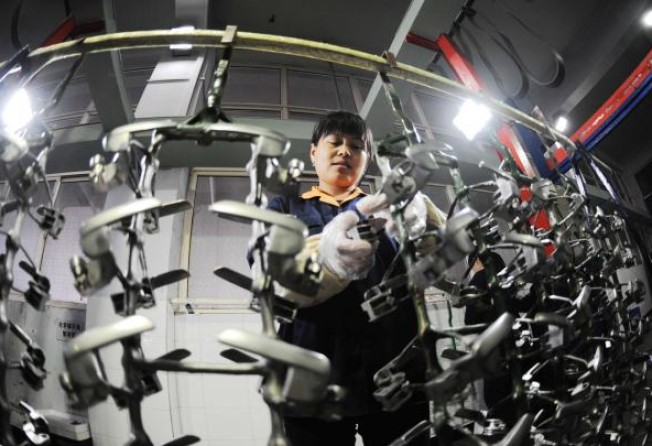
China PMI factory data points to broader recovery

Mainland factory activity rose to an 11-month high last month, but economists say external headwinds and new domestic property curbs will add uncertainties to growth.

With last month's figure, the official PMI has stayed above 50 - the threshold that divides expansion from contraction - for six months in a row.
A private survey conducted by HSBC and Markit Economics showed manufacturing PMI rose to 51.6 last month from 50.4.
"The broad-based recovery in the March PMIs suggests that economic activity likely [has] been on a steady path of moderate recovery, while inflation pressure remains contained," said economists at JP Morgan Chase Bank in a research report.
Meanwhile, US factory activity slowed last month as new orders weakened, but a rebound in construction spending in February was another sign of faster economic growth in the first quarter.
The Institute for Supply Management said its index of national factory activity fell to 51.3 last month from 54.2 in February. A reading above 50 indicates expansion in the manufacturing sector.
The yuan hit a 19-year high yesterday, buoyed by confidence in the mainland's economic rebound, after the central bank set its reference rate at the highest level since May 2012.
Gold prices also gained, though some analysts attributed the rise to tensions on the Korean Peninsula.
The output sub-index in the official PMI survey climbed to 52.7 last month from 51.2 in February. Industries including automotive, metal products, and tobacco reported a pick-up in output, but some others, including oil processing, ferrous metal and food and beverage reported a fall.
The sub-index for new orders stood at 52.3 last month, above 50 for six consecutive months, the official data showed. But the inventories sub-index fell to 47.5 from 49.5 in February.
A similar trend was seen in HSBC's PMI, in which both output and new orders expanded at solid rates while new export orders were up marginally.
Input prices fell for the first time in six months, albeit only slightly.
The decline in input costs, "plus the lingering external headwinds implies the Beijing policymakers should keep a relative[ly] accommodative policy stance in place", said HSBC's chief China economist Qu Hongbin.
Goldman Sachs said the rebound in PMI data from a low start earlier this year should be read with caution as seasonality may not have been completely stripped out of the data.